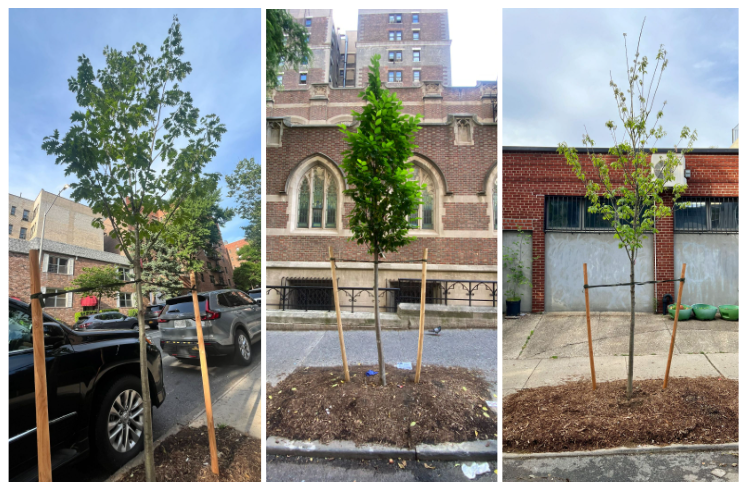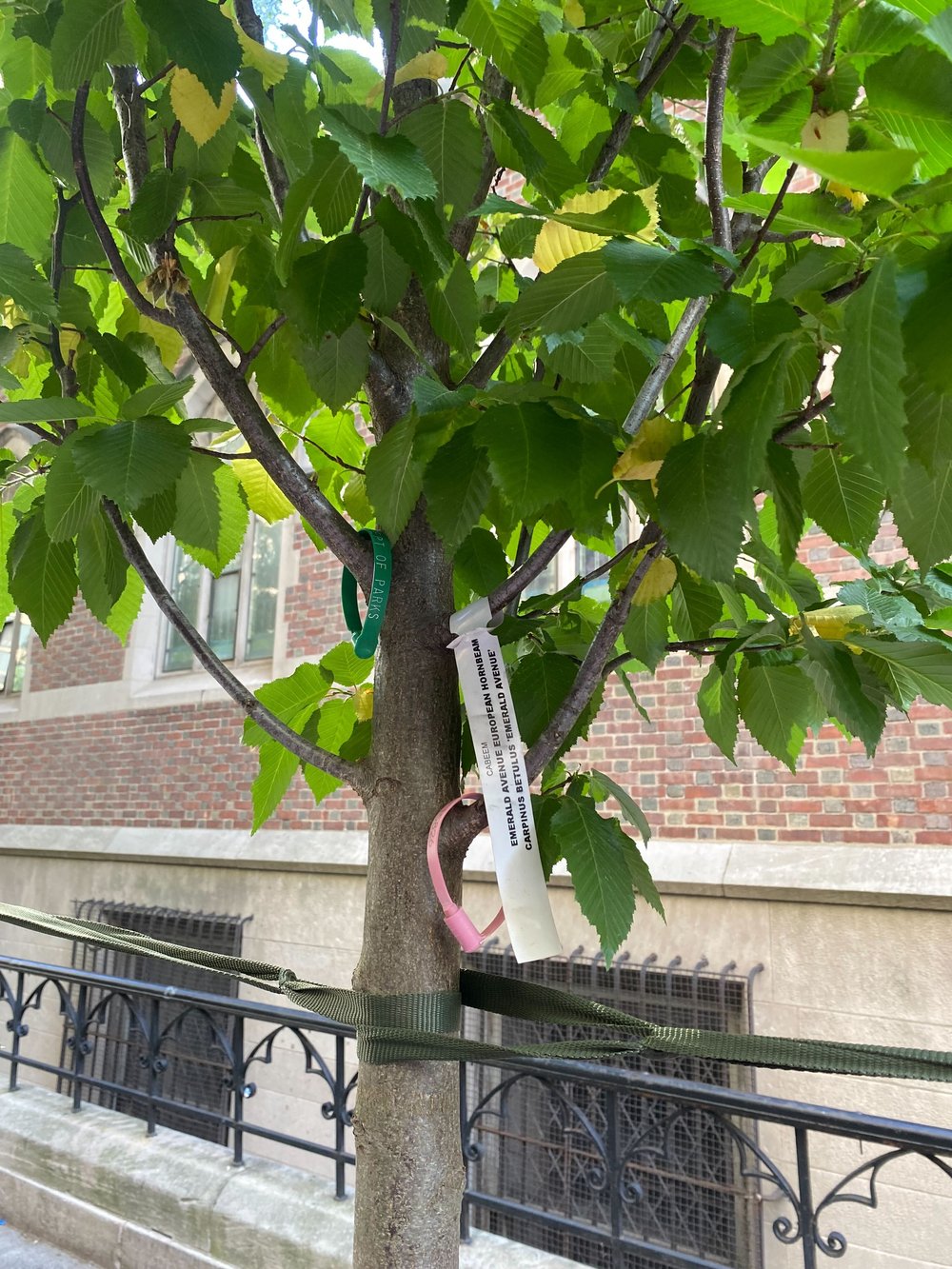Meet NYC’s coolest new street trees — and see where they're going
May 27, 2024, 1 p.m.
See the neighborhoods that slated to get new trees from the city this spring.

They’re slim, elegant, eco-conscious … and did we mention drought resistant? They’re New York City’s newest trees, and they may be coming to a sidewalk strip near you.
The city Parks Department is in the midst of its largest tree-planting spree in nearly a decade, with a whopping 9,300 new trees planned for this spring, parks officials told Gothamist. So far, workers have planted close to 3,000 saplings, according to city data analyzed by Gothamist.
Both the trees and the shade they’ll provide are desperately needed in a rapidly warming climate. Navé Strauss, director of street tree planting for the city, said the Parks Department is targeting neighborhoods where scant greenspace and higher poverty rates make residents particularly vulnerable to extreme heat.
“Our primary prerogative is to plant the right tree, for the right place, that will get the biggest that can be and provide the most shade cooling air filtration benefits,” Strauss said.
- heading
- Street tree quick tips
- image
- image
- None
- caption
- body
- The easiest way to request a tree is by calling 311, parks officials say. Those with money to spare can also receive trees and protective fences in exchange for donations to the parks department’s associated nonprofit, NYC Parks Tree Time.
- Parks Department contractors look after the trees for their first two years of life on the streets. About 94% of trees make it to the two-year mark, which is when young trees are past their most vulnerable stage.
- Watering is welcome. Your new street tree would dearly appreciate 20-30 gallons per week distributed around the trunk, especially between May and October, officials say.
- You can also plant flowers around the tree bed. Just be sure to follow Parks Department guidelines to keep the sapling safe. It recommends that you avoid crowding the tree’s root ball, which extends about a foot past the trunk in all directions.
The Parks Department offers lots of tree care volunteer events on its website.
The data shows dense clusters of newly planted trees in Harlem, Morningside Heights, Sunset Park and other neighborhoods. More plantings are planned in Pelham Parkway, Parkchester and Castle Hill in the Bronx, and in a broad swath of southeast Queens.
As they grow, the trees will provide fresh air and shelter from the summer heat, said Strauss said, a second-generation arborist who’s been curating the city’s tree canopy since 2009. He said the city’s "urban heat islands" are being prioritized as the Parks Department stares down steep budget cuts.
As a candidate, Mayor Eric Adams had promised to earmark 1% of the city’s budget for the department, but his most recent budget proposal dedicated just half that. Some city officials are calling on the mayor to use state and federal funding to make up the difference, Gothamist reported last week. They also reiterated their request that Adams commit to planting 1 million new trees by 2030 — a plan based on the city’s successful MillionTreesNYC campaign, which wrapped up in 2015.
New York City is a tough town for a baby tree. Saplings have to survive power lines, pedestrian and canine traffic, air pollution, severe storms and disease — sometimes all at the same time. Strauss said he and his team pick trees based in part on their resilience, their shade canopy and their adult heights. Tall trees are ideal for open spaces, while shorter species fare better under power lines, he said.

The new crop of saplings comprises more than 130 different species, about half of which hail from outside the U.S. According to the Parks Department, a wide variety of trees is key to keeping the urban canopy healthy and blunting the effects of botanical plagues like Dutch elm disease, which killed many of Eastern Parkway’s famous elm trees. Strauss said stretches of Eastern Parkway have been replanted this season with Dutch elm disease-resistant varieties.
“When you diversify your urban forest, you’re planning for the natural progression or spread of various diseases,” he said. “By diversifying them, you’re ensuring one disease doesn’t wipe out a whole street.”
Species data is only available for about 2,000 of the new trees. They include some rare new varieties, like the American persimmon, which can bear edible fruit if it has a buddy nearby to fertilize it. And as the city's climate verges into subtropical, Strauss and his team are slowly introducing some warmer-weather varieties, including southern magnolias and crepe myrtles.
Parks officials are also choosing species that will hold up to increasingly severe flooding and summer storms. But the city’s slushy winters mean it’s still no place for truly tropical flora.
“We’re not down to planting palmettos yet,” Strauss said. “This isn’t Florida.”

Local mainstays like American elms, thornless honey locusts and London plane trees remain among the most common trees. They’re beloved by arborists for their hardiness and shade canopies.
One factor the city doesn’t much consider when picking trees is whether they release lots of pollen, said Strauss, who himself is allergic to pollen. He said shade and hardiness take priority over pollen dispersal.
“It’s a small price to pay for the ultimate greater good benefit that trees provide,” he added.
StructValue([('url', 'https://gothamist.com/news/nyc-officials-call-on-mayor-adams-to-aggressively-pursue-funding-to-increase-the-citys-tree-population'), ('title', 'NYC officials call on Mayor Adams to ‘aggressively’ pursue funding to increase the city’s tree population'), ('thumbnail', None)])